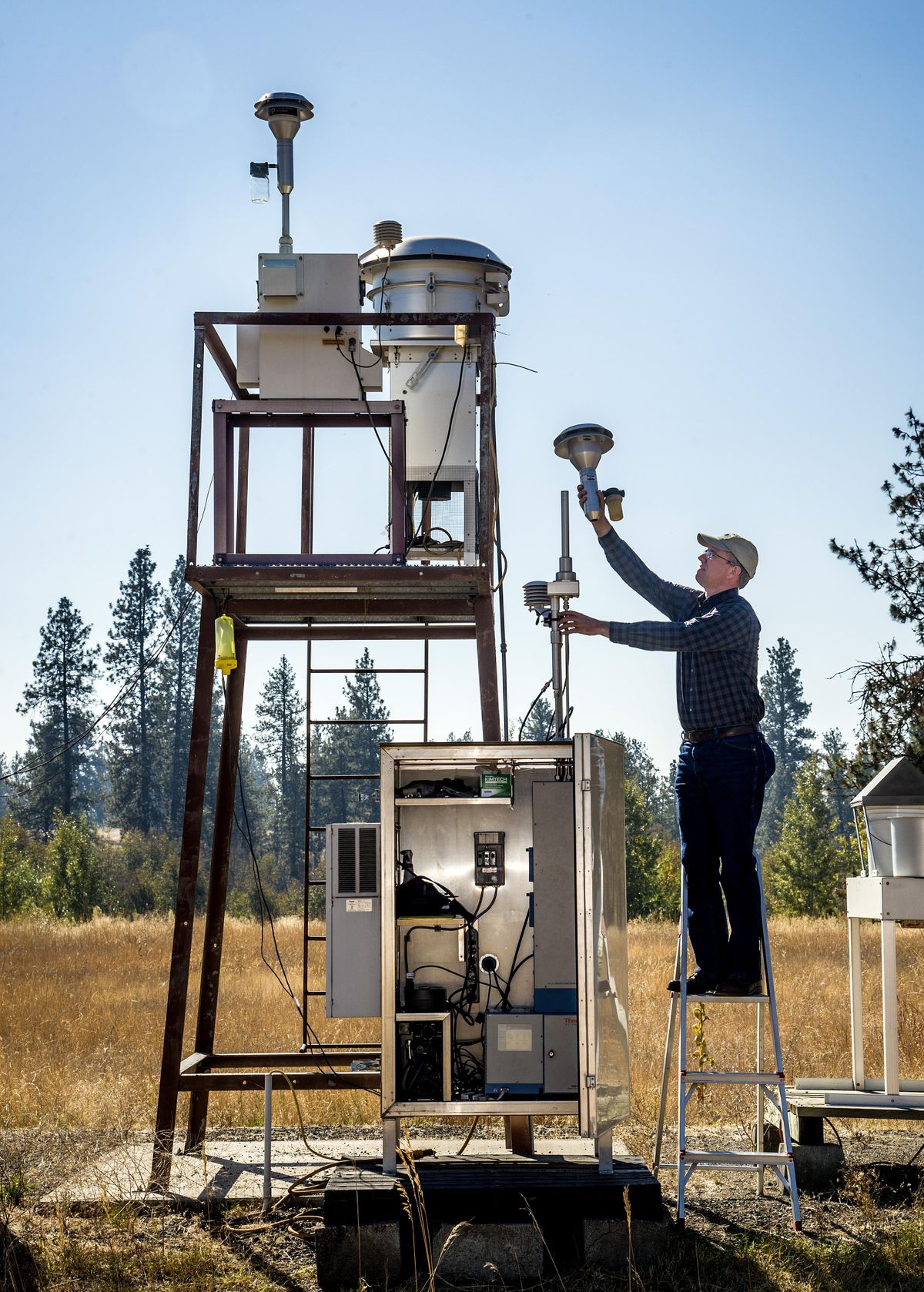Wildfire smoke pollution unprecedented in 2015

For many people, the smoky August air in the region put the term AQI into their vocabulary.
All month long, people were monitoring the daily “air quality index” to see how unhealthy the outdoor air was.
For good reason. August was the smokiest month since pollution monitoring for smoke particles began in 1999, according to the Spokane Regional Clean Air Agency.
On five days in August, smoke pollution was so bad the air was unhealthy for everyone, based on the 24-hour pollution average.
Eight other days saw smoke levels rise into the range of unhealthy for sensitive groups, such as people with lung disease and the very old and very young.
On Aug. 14 and 19, blowing dust combined with the smoke.
“That was the worst we’ve seen,” said Mark Rowe, the agency’s air quality technician.
Air pollution is measured on both a 24-hour and an hourly basis. The hourly number is based on a formula that shows the trend from previous hours and is the real-time number reported on air quality websites.
The most concentrated pollution occurred during the early evening on Aug. 21 when the hourly air quality index reached the hazardous level of 330. When averaged for 24 hours, the number was still eye-popping at 171 on the AQI, making that day the smokiest one since smoke monitoring began in 1999.
Dust storms twice since 1999 have caused higher 24-hour readings, including Sept. 15, 2013, with an AQI of 175.
Several other locales in Washington and North Idaho saw periods of hazardous air quality as the summer wildfires worsened.
Waves of smoke from different wildfires wafted over the region depending on the weather and wind patterns. Some were vaulted by heat and updrafts higher into the atmosphere, causing smoke clouds to partially block the sun and creating an eerie orange-brown light.
Other weather patterns allowed the smoke to drift along the ground, impacting air quality. As a result, some outdoor events were canceled and outdoor school activities were put on hold, as school officials monitored the hourly air quality index.
The smoke problem still isn’t completely gone. A return of wildfire smoke earlier this week put the region back into the high-moderate range for smoke pollution, but the readings were minor compared with the August air quality.
On Wednesday, the AQI reached 96 at a monitoring site in Liberty Lake, which is just four points short of unhealthy for the sensitive groups category that runs from 100 to 149 on the AQI.
Lisa Woodard, spokeswoman for the clean air agency, said smoke from fires in Western Montana apparently caused the increase in smoke pollution this week.
The National Weather Service also said fires in northeastern Washington and North Idaho were contributing to smoke pollution this week. A windstorm expected Saturday should end the spell of dirty air.
Tiny smoke particles are scientifically known as “Particle Matter 2.5,” which is a reference to their size at 2.5 microns, or 1/30th the width of the average human hair. Air pollution monitoring was upgraded to measure those particles starting in 1999.
Prior to 1999, the agency monitored for dust and smoke combined. Smoke is considered hazardous because it penetrates deep into the lungs and is hard for the body to dispel.
According to the Centers for Disease Control and Prevention, wildfire smoke, with its mixture of gases and particles from burning trees and plants, can worsen chronic heart and lung diseases.
During the combination of wildfire smoke and dust on Aug. 29, a backup computer belonging to the state Department of Ecology failed to operate properly, leaving air quality websites absent of current information.
Woodard said state officials reported to her agency that the Ecology Department’s main computer was turned off as part of scheduled maintenance and that a backup system was supposed to process air quality data, but failed, she said.